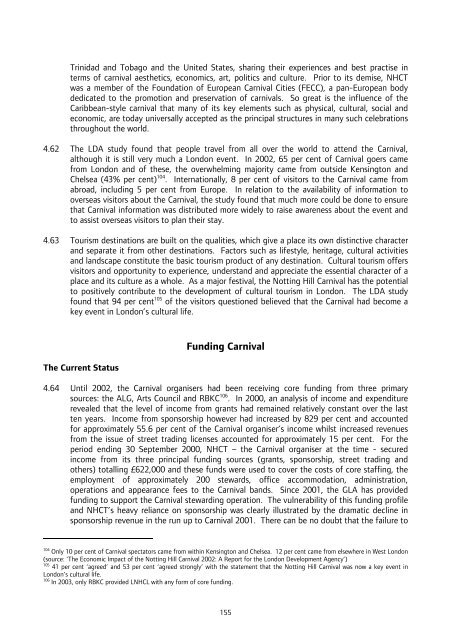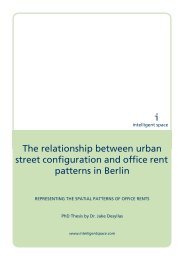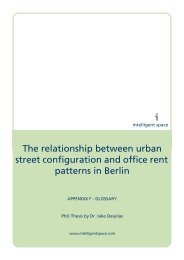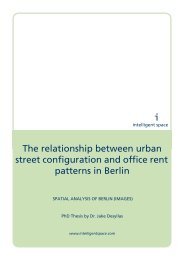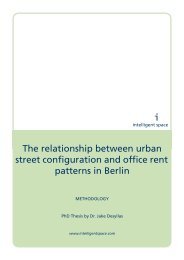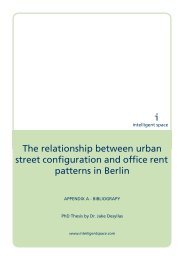Notting Hill Carnival Strategic Review - Intelligent Space
Notting Hill Carnival Strategic Review - Intelligent Space
Notting Hill Carnival Strategic Review - Intelligent Space
You also want an ePaper? Increase the reach of your titles
YUMPU automatically turns print PDFs into web optimized ePapers that Google loves.
Trinidad and Tobago and the United States, sharing their experiences and best practise in<br />
terms of carnival aesthetics, economics, art, politics and culture. Prior to its demise, NHCT<br />
was a member of the Foundation of European <strong>Carnival</strong> Cities (FECC), a pan-European body<br />
dedicated to the promotion and preservation of carnivals. So great is the influence of the<br />
Caribbean-style carnival that many of its key elements such as physical, cultural, social and<br />
economic, are today universally accepted as the principal structures in many such celebrations<br />
throughout the world.<br />
4.62 The LDA study found that people travel from all over the world to attend the <strong>Carnival</strong>,<br />
although it is still very much a London event. In 2002, 65 per cent of <strong>Carnival</strong> goers came<br />
from London and of these, the overwhelming majority came from outside Kensington and<br />
Chelsea (43% per cent) 104 . Internationally, 8 per cent of visitors to the <strong>Carnival</strong> came from<br />
abroad, including 5 per cent from Europe. In relation to the availability of information to<br />
overseas visitors about the <strong>Carnival</strong>, the study found that much more could be done to ensure<br />
that <strong>Carnival</strong> information was distributed more widely to raise awareness about the event and<br />
to assist overseas visitors to plan their stay.<br />
4.63 Tourism destinations are built on the qualities, which give a place its own distinctive character<br />
and separate it from other destinations. Factors such as lifestyle, heritage, cultural activities<br />
and landscape constitute the basic tourism product of any destination. Cultural tourism offers<br />
visitors and opportunity to experience, understand and appreciate the essential character of a<br />
place and its culture as a whole. As a major festival, the <strong>Notting</strong> <strong>Hill</strong> <strong>Carnival</strong> has the potential<br />
to positively contribute to the development of cultural tourism in London. The LDA study<br />
found that 94 per cent 105 of the visitors questioned believed that the <strong>Carnival</strong> had become a<br />
key event in London’s cultural life.<br />
The Current Status<br />
Funding <strong>Carnival</strong><br />
4.64 Until 2002, the <strong>Carnival</strong> organisers had been receiving core funding from three primary<br />
sources: the ALG, Arts Council and RBKC 106 . In 2000, an analysis of income and expenditure<br />
revealed that the level of income from grants had remained relatively constant over the last<br />
ten years. Income from sponsorship however had increased by 829 per cent and accounted<br />
for approximately 55.6 per cent of the <strong>Carnival</strong> organiser’s income whilst increased revenues<br />
from the issue of street trading licenses accounted for approximately 15 per cent. For the<br />
period ending 30 September 2000, NHCT – the <strong>Carnival</strong> organiser at the time - secured<br />
income from its three principal funding sources (grants, sponsorship, street trading and<br />
others) totalling £622,000 and these funds were used to cover the costs of core staffing, the<br />
employment of approximately 200 stewards, office accommodation, administration,<br />
operations and appearance fees to the <strong>Carnival</strong> bands. Since 2001, the GLA has provided<br />
funding to support the <strong>Carnival</strong> stewarding operation. The vulnerability of this funding profile<br />
and NHCT’s heavy reliance on sponsorship was clearly illustrated by the dramatic decline in<br />
sponsorship revenue in the run up to <strong>Carnival</strong> 2001. There can be no doubt that the failure to<br />
104<br />
Only 10 per cent of <strong>Carnival</strong> spectators came from within Kensington and Chelsea. 12 per cent came from elsewhere in West London<br />
(source: ‘The Economic Impact of the <strong>Notting</strong> <strong>Hill</strong> <strong>Carnival</strong> 2002: A Report for the London Development Agency’)<br />
105<br />
41 per cent ‘agreed’ and 53 per cent ‘agreed strongly’ with the statement that the <strong>Notting</strong> <strong>Hill</strong> <strong>Carnival</strong> was now a key event in<br />
London’s cultural life.<br />
106<br />
In 2003, only RBKC provided LNHCL with any form of core funding.<br />
155


